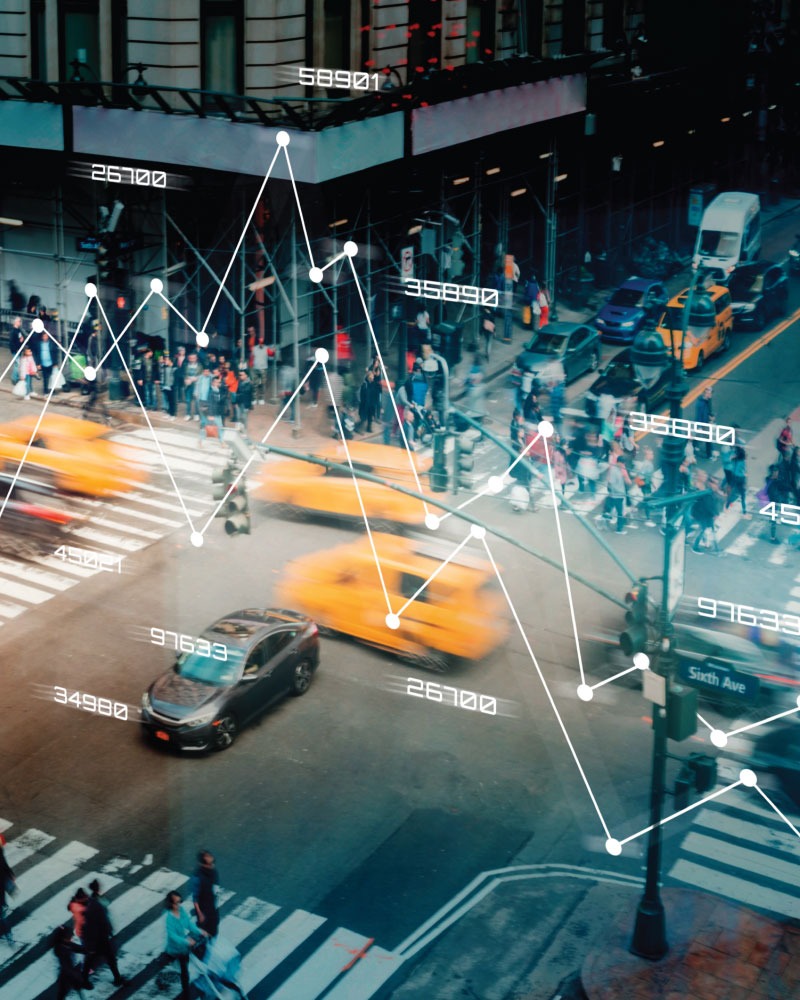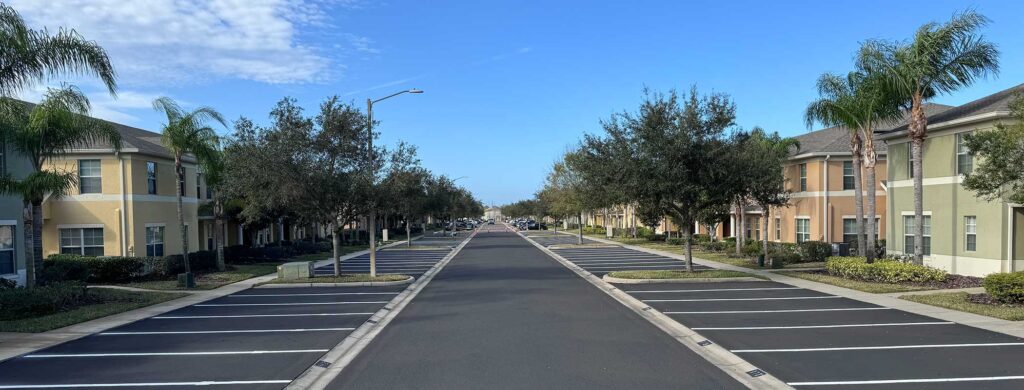Let’s discuss the future of Paving: How it’s Incorporating Technology in Modern Paving Solutions. In today’s rapidly evolving world, technology is revolutionizing every aspect of our lives, including the way we build and maintain our infrastructure. As urban landscapes continue to expand, the demand for smarter, more sustainable paving solutions is on the rise. From intelligent sensors to renewable energy-generating pavements, technology is reshaping the way we perceive and interact with paved surfaces. Modern paving solutions are incorporating technology in innovative ways, paving the way for a more connected and sustainable future.
Embracing smart pavements:
Smart pavements represent a groundbreaking advancement in the field of urban infrastructure. Sensors and data collection devices embedded in these intelligent surfaces monitor various parameters, such as temperature, humidity, traffic flow, and pavement condition, in real-time. By leveraging this data, city planners and engineers can make informed decisions regarding maintenance schedules, traffic management, and infrastructure investments.
Smart pavements offer a range of benefits, including:

1. Real-time monitoring:
Proactive Maintenance: Sensors integrated into smart pavements continuously gather data on various pavement conditions, including temperature, moisture levels, and structural integrity. This real-time monitoring allows authorities to detect early signs of wear and damage, such as cracks, potholes, and surface degradation. By identifying issues promptly, cities can initiate proactive maintenance and repairs, preventing minor problems from escalating into major safety hazards or costly infrastructure damage.
Cost-Effective Solutions: Early detection of pavement issues through real-time monitoring enables cities to implement cost-effective maintenance strategies. By addressing minor defects before they worsen, municipalities can avoid expensive repairs and reconstruction projects. This proactive approach optimizes budget allocations and ensures efficient use of limited resources for urban infrastructure upkeep.
2. Optimized Traffic Flow:
Efficient Traffic Management: Smart pavements equipped with traffic sensors monitor vehicle movement and congestion levels in real time. This data provides valuable insights into traffic patterns, peak hours, and congestion hotspots, allowing traffic management authorities to optimize signal timing and adjust traffic flow dynamically. By synchronizing traffic signals and adapting signal patterns based on real-time data, cities can reduce traffic congestion, minimize delays, and improve overall traffic efficiency.
Enhanced Mobility: Smart pavements optimize traffic flow to improve mobility and accessibility for motorists, cyclists, and pedestrians alike. By reducing travel times, congestion, and bottlenecks, smart traffic management systems contribute to smoother and more efficient transportation networks. This, in turn, enhances productivity, reduces fuel consumption, and improves air quality, fostering a more sustainable and livable urban environment.

Beyond Smart Pavements: Innovations in Paving Solutions
In addition to smart pavements, innovative technologies are being developed to further enhance the functionality and sustainability of paved surfaces:
1. Renewable Energy-Generating Pavements:
Solar-Powered Pavements:… Photovoltaic cells or solar panels are integrated into the pavement surface to harness solar energy and convert it into electricity. Embedding these solar panels within sidewalks, parking lots, and roadways utilizes otherwise unused space to generate renewable energy. Solar panels can power streetlights, traffic signals, and other urban infrastructure, reducing reliance on traditional grid-based energy sources and lowering carbon emissions.
Kinetic Energy-Harvesting Pavements: Kinetic energy-harvesting pavements utilize the movement of vehicles, cyclists, and pedestrians to generate electricity. Embedded sensors or piezoelectric materials within the pavement surface. It can convert the mechanical energy from footsteps or vehicle tires into electrical energy. It can store and power streetlights, illuminate pathways, or charge electronic devices, providing a sustainable and innovative solution for urban energy generation.

2. Permeable Pavement Systems:
Environmental Benefits: Permeable pavement systems allow rainwater to infiltrate through the surface, reducing runoff and minimizing the risk of flooding and water pollution. These eco-friendly paving solutions help recharge groundwater, mitigate stormwater runoff, and promote sustainable urban development. By reducing the reliance on conventional stormwater management systems and preserving natural hydrological processes, permeable pavement systems contribute to environmental conservation and water resource management.
Applications: Permeable pavement systems can enhance various urban settings, including parking lots, sidewalks, plazas, and streetscapes. These systems utilize permeable materials such as porous asphalt, and permeable concrete. Interlocking permeable pavers to facilitate water infiltration and drainage. By integrating permeable pavements into urban landscapes, cities can enhance resilience to climate change. It can reduce urban heat island effects, and improve overall water quality.
3. Enhanced Safety:
Early Hazard Detection: Smart pavements are equipped with sensors capable of detecting hazardous conditions such as black ice, standing water, or low visibility in real-time. By promptly alerting drivers and pedestrians to potential safety risks, smart pavements help prevent accidents and mitigate the impact of adverse weather conditions. This proactive approach to safety enhances overall road safety and reduces the likelihood of collisions, injuries, and fatalities on roadways.
Improved Road User Experience: Enhanced safety features provided by smart pavements contribute to a more positive road user experience. By minimizing the risk of accidents and disruptions, smart pavements promote confidence and peace of mind among drivers, cyclists, and pedestrians. This fosters a safer and more enjoyable travel environment, encouraging active transportation choices and promoting sustainable mobility options within communities.

In summary, real-time monitoring, optimized traffic flow, and enhanced safety features offered by smart pavements represent significant advancements in urban infrastructure management. By leveraging technology to proactively monitor, manage, and enhance pavement conditions, cities can create safer, more efficient, and more sustainable transportation networks for all road users.
3. Dynamic Pavement Markings:
Customizable Road Markings: … Embedded LED lights in dynamic pavement markings establish customizable road markings. Signage that can adapt to changing traffic conditions or environmental factors. These dynamic markings enhance visibility and safety on roadways, particularly in low-light conditions or adverse weather. By dynamically adjusting lane markings, pedestrian crossings. Traffic signals and dynamic pavement markings improve traffic flow, reduce congestion, and enhance road safety for all road users.
Smart Traffic Management:.. Integrating dynamic pavement markings with traffic management systems provides real-time information on road conditions, traffic patterns, and potential hazards. By dynamically updating lane markings, speed limits, and directional signage, we reduce the likelihood of accidents and traffic congestion. Dynamic pavement markings can alert drivers to changing road conditions, construction zones, or emergencies, enhancing overall road safety and efficiency.
In conclusion, the innovations in paving solutions beyond smart pavements demonstrate the potential for technology to transform urban infrastructure and promote sustainable development. From renewable energy-generating pavements to permeable pavement systems and dynamic pavement markings, these innovative solutions offer tangible benefits for cities, communities, and the environment alike. By embracing these advancements, cities can create more resilient, efficient, and livable urban environments for generations to come.
Paving the Way to a Smarter Future
Looking ahead to the next phase of city planning, technological advancements will remain essential in determining the final forms that cities take. There is an infinite amount of room for innovation in paving solutions. Such as smart pavements that can detect and respond to changing conditions in real time. Surfaces that generate renewable energy to power cities in a sustainable way. Urban areas can be made more sustainable, and efficient. Safe for future generations if we embrace technology and put money into smart infrastructure.
More than a fad, the incorporation of technology into contemporary paving solutions. From smart pavements and beyond—marks a sea change toward a future that is better connected. More efficient, and more environmentally friendly. A world that is smarter, greener, and more resilient can be ours if we welcome these advancements with open arms.
About the author:
Express Asphalt solutions, your premium asphalt business in Florida. With the focus on quick, affordable, and top-notch services. We specialize in asphalt paving and repair, sealcoating, as well as parking lot striping. Our skilled team ensures your parking areas are safe, organized and visually appealing. From commercial properties to residential communities, we cater to all your asphalt needs with precision and care. Enhance the functionality and appearance of your parking spaces with our quality solutions. Contact us now for a free quote and experience the different Express Asphalt Solutions can make!
See some of our Clients review here
"*" indicates required fields




